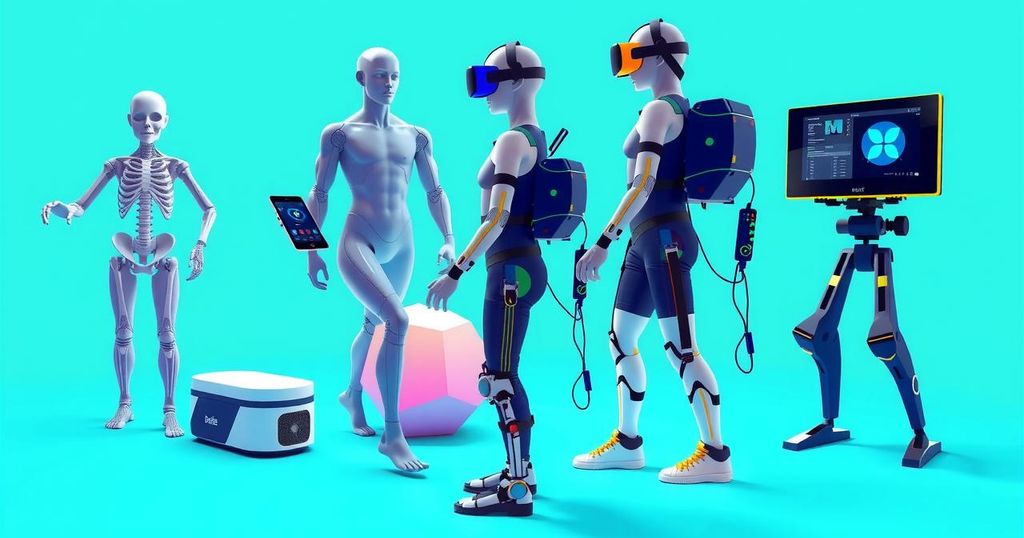Top 10 Physiotherapy Trends 2024: Sales, Revenue, and Insights
As physiotherapy advances into 2024, technology is stepping in to reshape the field. Key innovations include robotics, tele-rehabilitation, VR/AR, wearables, AI, and electrotherapy, all aimed at enhancing patient care. These tech advances improve outcomes, accessibility, and recovery times while also benefiting physiotherapists and healthcare systems. Major players in the market, such as Hocoma AG and Medtronic, are leading this transformative change.
The world of physiotherapy is on the brink of transformation as we enter 2024, with technology leading the charge. Traditionally, this field centered on hands-on techniques and therapeutic exercises aimed at improving mobility and alleviating pain. However, advancements over the past two decades have unleashed a wave of innovative tools that promise to enhance treatment outcomes and redefine the rehabilitation experience altogether.
So, what’s the buzz about technology’s role in physiotherapy? Well, it encompasses a range of tools from diagnostic gadgets and virtual reality systems to telehealth platforms and AI-driven solutions. With these innovations, physiotherapists can tailor treatments more precisely, reduce their workloads, and create more efficient rehab programs that could quite literally change patients’ lives.
First up are robotics and exoskeletons, which are rapidly gaining traction for helping patients regain mobility. These devices assist with movement and muscle strengthening, particularly for those recovering from serious injuries, like strokes or spinal cord damage. The repetitive motion training offered by robotic systems significantly speeds up recovery.
Then, there’s tele-rehabilitation and remote monitoring, which allow physiotherapy services to be administered from home. Patients can now avoid traveling to clinics thanks to digital platforms, enabling physiotherapists to keep close tabs on their progress and adjust treatment plans in real time—ideal for managing chronic conditions such as arthritis.
Another rising star is virtual reality (VR) and augmented reality (AR). These immersive technologies create engaging experiences for rehabilitation, encouraging patients to practice movements in simulated environments. Stroke survivors, for instance, can use VR to simulate walking or reaching for objects, giving them chances to improve in a safe, controlled way.
Wearable devices have also made waves, tracking vital movements, muscle activity, and even body posture. These tools offer insightful data for both patients and clinicians, leading to more personalized care. Smart insoles are a prime example, measuring gait and pressure, unveiling valuable details that can vastly influence treatment plans.
Artificial intelligence and machine learning are shaping physiotherapy, too. By analyzing large sets of data to discern patterns, AI helps physiotherapists evaluate conditions more effectively. It can also customize rehabilitation programs based on a patient’s progress, making the therapy more efficient.
Then there’s electrotherapy and ultrasound, both powerful tools for pain management and tissue healing. Using electrical currents or sound waves, these treatments accelerate healing processes and improve recovery outcomes, crucial for those battling musculoskeletal issues.
Let’s not overlook 3D printing; it’s revolutionizing how we craft customized splints, braces, and prosthetics—all tailored to individual needs. This ensures better fits and comfortable use, which play a significant role in patient recovery.
So, why is all this tech important? For one, it facilitates improved patient outcomes through real-time data and rapid adjustments to treatment. Plus, it expands access to quality care, particularly for those living far from clinics or struggling with mobility. Telehealth solutions are particularly game-changing for elderly patients or those recovering from surgery.
The potential cost reductions can’t be ignored either. Yes, upfront tech costs can be significant, but the efficiencies gained often justify the expenditures. Automated systems free up time, so therapists can treat more patients effectively, saving money in the long run.
Who stands to benefit the most? Well, patients are certainly at the forefront, enjoying better care and faster recovery thanks to personalized plans and efficient services. Physiotherapists aren’t left out either, having tools that allow for better diagnosis and streamline their workflows, which means more patients can receive care. Lastly, healthcare providers find tech to be a relief, reducing strain on facilities while improving overall service delivery.
Looking ahead, the future of technology in physiotherapy seems bright. We’re expecting to see even more sophisticated AI, robotics, and telemedicine, which will continue to reshape what care looks like. This tech isn’t just about supporting patients; it’s about redefining rehabilitation practices altogether.
In terms of market stakeholders, some key players like Hocoma AG, ReWalk Robotics, and Medtronic are already paving the way in this space. As we approach the new year, the industry seems ready for even more ground-breaking advancements to further improve patient care and rehabilitation.
To sum it all up—technology has firmly established itself as an essential element in contemporary physiotherapy. Through innovative tools, we’re looking at improved patient outcomes, enhanced accessibility, and streamlined processes. As this sector advances, we can expect AI, robotics, telehealth, and wearables to drive even greater changes, enriching the lives of patients while supporting physiotherapists and healthcare institutions.
In conclusion, technology is revolutionizing physiotherapy, guiding the way to improved outcomes, patient access, and overall efficiency in treatment. With the rise of advanced devices and practices, the landscape is not only evolving but promising a better future for patient care and therapy procedures alike.
Original Source: www.sphericalinsights.com




Post Comment